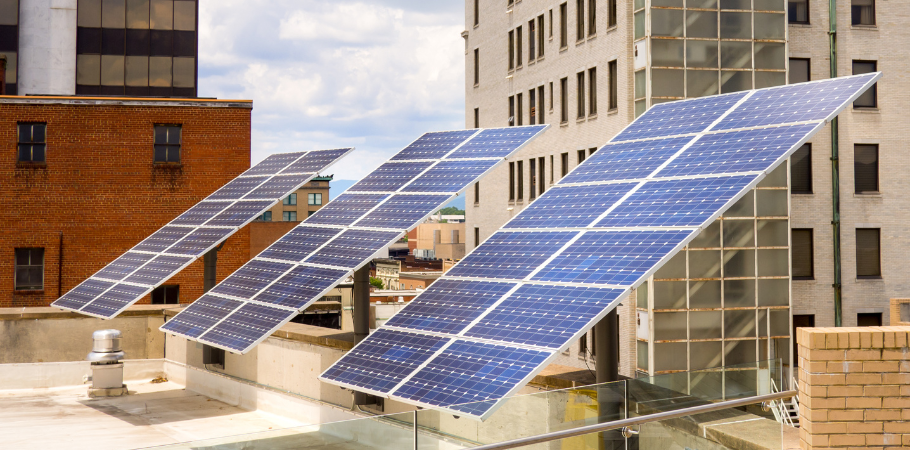
Green transformation is a trend that many organizations, businesses and communities in Singapore are interested in implementing. From the perspective of businesses, ESG and digital technology are two closely related aspects of green transformation in Singapore businesses.
Climate change and extreme weather types are causing serious changes to the global ecosystem. In this context, the green transformation in Singapore is a long-term solution to address environmental hazards while ensuring economic development. In particular, the application of digital technologies is the right direction to manage resources, optimize the use of resources and monitor the impacts of production and business processes on the environment.
Now, we will discuss the overview of green transformation in Singapore. Then, let’s explore some solutions and technologies to support business towards a sustainable future.
Overview of Green Transformation in Singapore
Recently, the Singapore government is working towards green transformation in businesses and organizations through providing initiatives and support measures.
1. Enterprise Sustainability Programme
Enterprise Singapore (ESG) introduced the S$180 million Enterprise Sustainability Programme. This program aids Singapore companies, especially small and medium enterprises, in their sustainability efforts. It aims to help them seize opportunities in the green economy, ensuring competitiveness locally and globally.
The support focuses on three key components: building sustainability capabilities in enterprises, enhancing sector-specific skills, and fostering a vibrant sustainability ecosystem. Furthermore, ESG collaborates with industry partners to develop training workshops and projects on capability or product development.
2. Leading Centre for Green Finance
One major goal under the green transformation in Singapore is to make this country a leading green finance center in Asia and globally. To aid the shift to a low-carbon economy, Budget 2022 revealed that the public sector will issue S$35 billion of green bonds by 2030. These bonds will fund green infrastructure projects.
Additionally, the Monetary Authority of Singapore (MAS) is developing a long-term plan to embed sustainable finance in Singapore’s financial landscape. It is also promoting sustainable financing actively. For example, the Green Finance Industry Taskforce has issued guidelines for climate-related disclosures by financial institutions. They also introduced a framework for banks to assess green trade finance transactions and a white paper on scaling green finance.
In June 2022, the Singapore government unveiled the Singapore Green Bond Framework. This framework governs sovereign green bond issuances. Proceeds from these bonds will fund Green Plan expenditures.
3. Solar Deployment
Singapore aims to advance towards a green, low-carbon future by increasing solar deployment and energy storage. This will address solar intermittency and enhance grid resilience. The government plans to boost solar energy development five-fold, aiming for at least two gigawatt-peak by 2030. This amount of solar energy could power around 350,000 households annually.
To hit this target, solar PV systems are being installed on Housing Development Board flats, the Changi Business Park, the central business district, and the Tengeh Reservoir.

Impact of the Green Transformation in Singapore and the Asia-Pacific Region
In the journey of green transformation in Singapore, the government aims to achieve net-zero greenhouse gas emissions by mid-century. This goal seeks to secure an early competitive edge in a low-carbon economy and foster new growth in industry, services, and finance.
This transformation introduces opportunities like green finance, carbon services, trading, and sustainable tourism. Singapore’s sustainability initiatives could spur green growth across the Asia-Pacific region. As a strategic regional hub, Singapore could also drive Southeast Asia’s sustainability and decarbonization efforts, accelerating the green transformation.
Some Main Solutions for Green Transformation in Singapore Businesses
According to many reports, the IT industry will contribute 20% to all activities towards green transformation. In addition, digital technology will accelerate progress towards the Sustainable Development Goals by 22%. From the perspective of businesses, ESG and digital technology can be considered as two closely related aspects of green transformation. And, 54% of businesses believe that new technologies play an important role in accelerating the progress of sustainable development.
Not only meeting sustainable development goals, green transformation in Singapore businesses is also a way to improve their competitiveness. The following solutions can be suitable reference lessons for businesses that are interested in and implementing the green transformation process.
1. Transferring and Optimizing Energy Efficiency
Firstly, one of the main ways to go green is to use new energy sources – renewable energy – to replace traditional energy – fossil energy. To achieve this, businesses can apply digital technologies to help optimize the process of creating energy and controlling energy systems. Recently, Singapore and other smart cities also contribute to reducing energy consumption through monitoring, regulating and maximizing automation of energy-consuming equipment.
2. Management of Resource Use and Waste
The uncontrolled use of resources or lack of reasonable waste treatment measures is also a problem that businesses need to prioritize solving. As businesses move towards green transformation, they need to solve these issues in the most effective way. Moreover, they can incorporate digital solutions into the application to help business leaders solve this headache.
For example, smart water management systems can help monitor and reduce water waste and optimize the use of water resources. Or, businesses can use sensor technology to monitor the amount of waste and notify managers about waste collection. Moreover, it helps to reduce pollution and avoid wasting resources (when collecting too much garbage unnecessarily).
3. Integration of Smart Grid and Energy Management System
In fact, managing energy and resource consumption data can have a great impact on the scale of the entire economy and society. The integration of intelligent management systems can help collect and analyze data automatically. It is the basis for optimizing the use of energy resources and reducing greenhouse gas emissions.
In the energy industry, intelligent management systems help coordinate the operation of smart grids, optimize energy generation and distribution. Thus, they contribute to the reduction of energy security risks as well as emissions to the environment.
4. Encourage Collaboration and Data Sharing between Units
Obviously, collaboration and data sharing between organizations, businesses, and governments will support maximizing the potential of digital solutions. The sharing of data and information between parties can create valuable information and help improve and optimize decision-making. Therefore, developing an interdisciplinary ecosystem through data sharing supports businesses to increase innovation and collaboration in solutions to climate change and other environmental impacts.

Technologies Support Businesses in the Green Transformation in Singapore
For the green transition in Singapore businesses, a number of technologies can support them in the sustainable journey. Here is some examples:
1. Internet of Things (IoT) Technology
Businesses apply smart energy management systems, helping to optimize energy use and reduce carbon emissions to the environment through the support of IoT technology. With IoT, devices are connected to each other through the internet, automatically sending and receiving data to a central system as well as to related devices.
The data from IoT can allow operators to get an overall view of system performance, displaying data on machine performance and energy consumption. This makes it possible for companies to track and report on ESG indicators quickly. Some studies show that businesses adopting IoT can reduce abnormal downtime by 30%; 16-20% of production time and 13.2% of energy consumption.
2. Artificial Intelligence – AI
Thanks to the support of artificial intelligence, many businesses have found effective solutions in resource management and energy saving. AI can help analyze data from different sources to find optimal solutions to minimize waste and enhance productivity. In addition, this technology can also predict environmental changes and provide effective preventive solutions
Heavy industries such as steel and cement production are major sources of CO2 emissions into the environment. Statistics show that the steel industry can account for up to 1/4 of the total greenhouse gas emissions in the entire manufacturing industry.
See more: Singapore’s AI Journey in Innovation and Governance
3. Blockchain Technology
Blockchain technology can be researched and applied as a tool to solve the problem of pollution monitoring and monitoring the sustainability of products. Some experts predict that blockchain can be the key to sustainable innovations, helping to minimize climate change.
For example, blockchain technology can be used to verify and trace the origin of products, from agricultural products to renewable energy production. This helps ensure that products with the “green” label are produced and consumed in a truly sustainable way.
4. Data Analysis
By collecting and analyzing data from a variety of sources, we can better understand the impact of humans on the environment, thereby creating sustainable solutions. The technology of data extraction and analysis has proven its usefulness in assessing the state of the environment and managing resources.
In addition, data analytics systems can also make suggestions for improving performance, saving energy, and helping to promote green transformation. Moreover, predicting and updating energy consumption in real time helps improve the efficiency of building energy management, saving energy to the maximum extent.
Conclusion: Green Transformation in Singapore is Changing Rapidly
Green transformation in Singapore is no longer a slogan but has become an inevitable direction, mandatory for businesses to implement if they want to participate in the global market. To achieve the goals of green transformation and sustainable development, creating a differentiated competitive advantage, Singapore businesses must systematically integrate green strategies, business strategies and digital transformation.
Along with tools and solutions from Digital Transformation, corporate culture also plays a key role in promoting the sustainable development program. When sustainability is incorporated into daily systems and workflows, businesses can effectively achieve their transformation goals.
See more: Singapore’s Sustainable Revolution: The Impact of Software on Manufacturing


